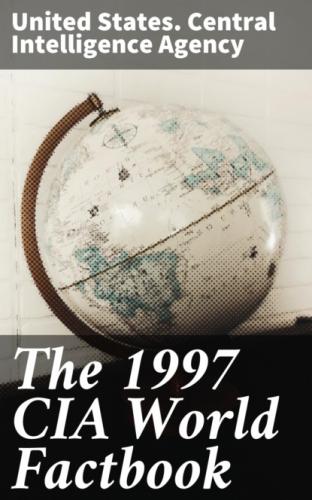Industries: food processing, textiles and clothing; lumber, oil, cement, chemicals, mining, basic metals, hydropower
Industrial production growth rate: 6% (1995 est.)
Electricity - capacity: 1.533 million kW (1995)
Electricity - production: 3.86 billion kWh (1994)
Electricity - consumption per capita: 1,221 kWh (1995 est.)
Agriculture - products: wide range of temperate-zone crops and livestock
Exports: total value: $205 million (f.o.b., 1995) commodities : asphalt, metals and metallic ores, electricity, crude oil, vegetables, fruits, tobacco partners: Italy, US, Greece, The Former Yugoslav Republic of Macedonia
Imports: total value: $680 million (f.o.b., 1995) commodities : machinery, consumer goods, grains partners: Italy, Greece, Bulgaria, Turkey, The Former Yugoslav Republic of Macedonia
Debt - external: $500 million (1994 est.)
Economic aid: recipient : ODA, $NA
Currency: 1 lek (L) = 100 qintars
Exchange rates: leke (L) per US$1 - 150.00 (May 1997), 104.50 (1996), 92.70 (1995), 94.62 (1994), 102.06 (1993), 75.03 (1992)
Fiscal year: calendar year
@Albania:Communications
Telephones: 55,000
Telephone system: domestic: obsolete wire system; no longer provides a telephone for every village; in 1992, following the fall of the communist government, peasants cut the wire to about 1,000 villages and used it to build fences international : inadequate; international traffic carried by microwave radio relay from the Tirane exchange to Italy and Greece
Radio broadcast stations: AM 17, FM 1, shortwave 0
Radios: 577,000 (1991 est.)
Television broadcast stations: 9
Televisions: 300,000 (1993 est.)
@Albania:Transportation
Railways: total : 670 km standard gauge: 670 km 1.435-m gauge (1995)
Highways: total: 15,500 km paved: 4,650 km unpaved: 10,850 km (1995 est.)
Waterways: 43 km plus Albanian sections of Lake Scutari, Lake Ohrid, and Lake Prespa (1990)
Pipelines: crude oil 145 km; petroleum products 55 km; natural gas 64 km (1991)
Ports and harbors: Durres, Sarande, Shengjin, Vlore
Merchant marine: total: 8 cargo ships (1,000 GRT or over) totaling 39,201 GRT/57,938 DWT (1996 est.)
Airports: 11 (1994 est.)
Airports - with paved runways: total: 5 2,438 to 3,047 m: 3 914 to 1,523 m: 2 (1994 est.)
Airports - with unpaved runways: total: 6 over 3,047 m: 2 2,438 to 3,047 m : 1 1,524 to 2,437 m: 1 914 to 1,523 m: 2 (1994 est.)
Military
Military branches: Army, Navy, Air and Air Defense Forces, Interior
Ministry Troops, Border Guards
Military manpower - military age: 19 years of age
Military manpower - availability: males age 15–49: 738,082 (1997 est.)
Military manpower - fit for military service: males: 600,403 (1997 est.)
Military manpower - reaching military age annually: males: 31,823 (1997 est.)
Military expenditures - dollar figure: $42 million (1996)
Military expenditures - percent of GDP: 1.5% to 2.0% (1996)
Transnational Issues
Disputes - international: the Albanian Government supports protection of the rights of ethnic Albanians outside of its borders; Albanian majority in Kosovo seeks independence from Serbian Republic; Albanians in Macedonia claim discrimination in education, access to public-sector jobs and representation in government
Illicit drugs: increasingly active transshipment point for Southwest Asian opiates, hashish, and cannabis transiting the Balkan route and cocaine from South America destined for Western Europe; limited opium and cannabis production; ethnic Albanian narcotrafficking organizations active in Central and Eastern Europe ______________________________________________________________________
ALGERIA
@Algeria:Geography
Location: Northern Africa, bordering the Mediterranean Sea, between
Morocco and Tunisia
Geographic coordinates: 28 00 N, 3 00 E
Map references: Africa
Area: total : 2,381,740 sq km land: 2,381,740 sq km water: 0 sq km
Area - comparative: slightly less than 3.5 times the size of Texas
Land boundaries:
total: 6,343 km
border countries : Libya 982 km, Mali 1,376 km, Mauritania 463 km,
Morocco 1,559 km, Niger 956 km, Tunisia 965 km, Western Sahara 42 km
Coastline: 998 km
Maritime claims: exclusive fishing zone: 32–52 nm territorial sea: 12 nm
Climate: arid to semiarid; mild, wet winters with hot, dry summers along coast; drier with cold winters and hot summers on high plateau; sirocco is a hot, dust/sand-laden wind especially common in summer
Terrain: mostly high plateau and desert; some mountains; narrow, discontinuous coastal plain
Elevation extremes: lowest point : Chott Melrhir −40 m highest point: Tahat 3,003 m
Natural resources: petroleum, natural gas, iron ore, phosphates, uranium, lead, zinc
Land use: arable land: 3% permanent crops: 0% permanent pastures: 13% forests and woodland: 2% other : 82% (1993 est.)
Irrigated land: 5,550 sq km (1993 est.)
Natural hazards: mountainous areas subject to severe earthquakes; mud slides
Environment - current issues: soil erosion from overgrazing and other poor farming practices; desertification; dumping of raw sewage, petroleum refining wastes, and other industrial effluents is leading to the pollution of rivers and coastal waters; Mediterranean Sea, in particular, becoming polluted from oil wastes, soil erosion, and fertilizer runoff; inadequate supplies of potable water
Environment - international agreements: party to : Biodiversity, Climate Change, Desertification, Endangered Species, Environmental Modification, Law of the Sea, Ozone Layer Protection, Ship Pollution, Wetlands signed, but not ratified: Nuclear Test Ban
Geography - note: second-largest country in Africa (after Sudan)
@Algeria:People
Population: 29,830,370 (July 1997 est.)
Age structure: 0–14 years : 39% (male 5,923,391; female 5,712,088) 15–64 years: 57% (male 8,619,009; female 8,450,774) 65 years and over: 4% (male 525,556; female 599,552) (July 1997 est.)
Population growth rate: 2.18% (1997 est.)
Birth rate: 28.01 births/1,000 population (1997 est.)
Death rate: 5.76 deaths/1,000 population (1997 est.)
Net migration rate: −0.49 migrant(s)/1,000 population (1997 est.)
Sex ratio: at birth: 1.04 male(s)/female under 15 years: 1.04 male(s)/female 15–64 years: 1.02 male(s)/female 65 years and over: 0.88 male(s)/female total population: 1.02 male(s)/female (1997
